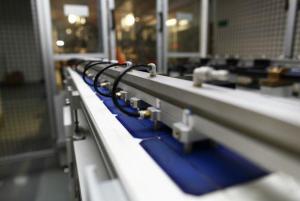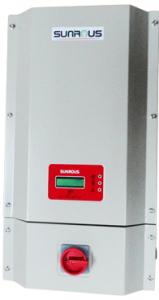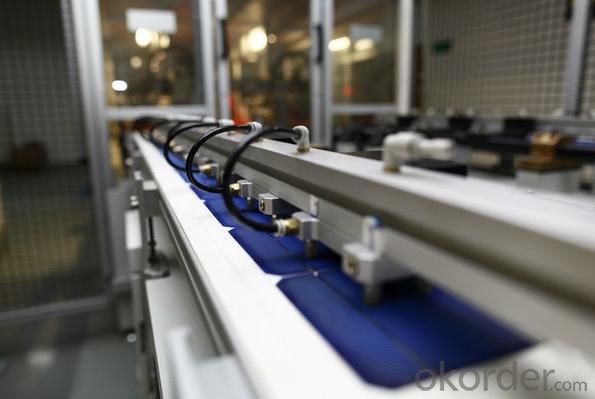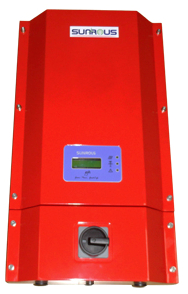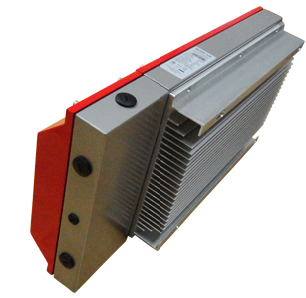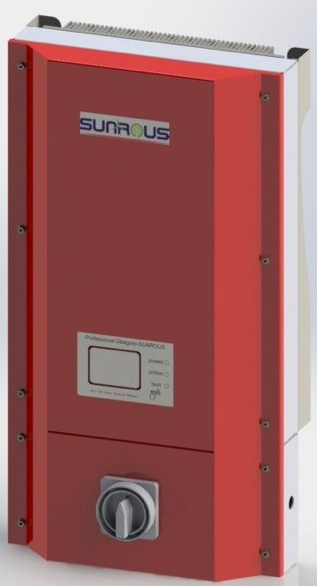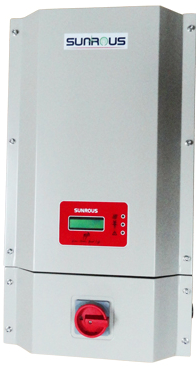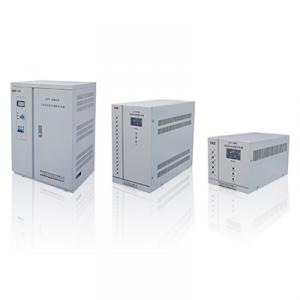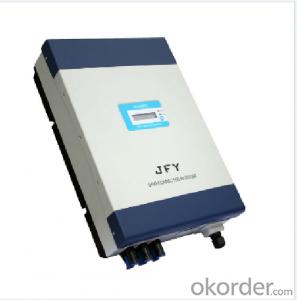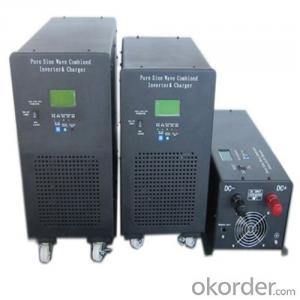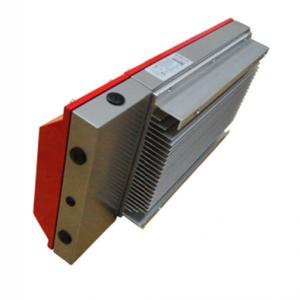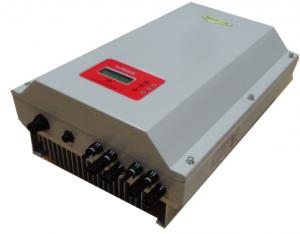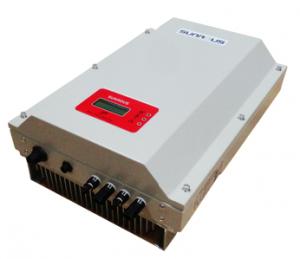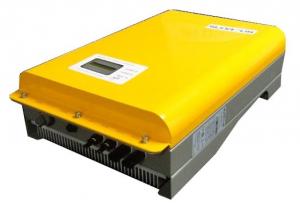Solar Inverter V Guard - PV Grid-Tied Inverter-Sunrous Dual MPPT US
- Loading Port:
- Shanghai
- Payment Terms:
- TT or LC
- Min Order Qty:
- 10 mm
- Supply Capability:
- 1000 mm/month
OKorder Service Pledge
OKorder Financial Service
You Might Also Like
PV Grid-Tied Inverter-Sunrous -Dual MPPT-US
A solar inverter, or PV inverter, or Solar converter, converts the variable direct current (DC) output of a photovoltaic (PV) solar panel into a utility frequency alternating current (AC) that can be fed into a commercial electrical grid or used by a local, off-grid electrical network. It is a critical BOS–component in a photovoltaic system, allowing the use of ordinary AC-powered equipment. Solar inverters have special functions adapted for use with photovoltaic arrays, including maximum power point tracking and anti-islanding protection.
DATASHEET
GT3.6-ZX-01/HF | |
Input(DC) | |
Max.DC Power | 3600W |
Max.DC Voltage | 500V |
PV Voltage range, MPPT | 60V ~ 360V |
Max.input current | 30.0A |
Number of MPP trackers | 2 |
Max.number of strings (parallel) | 4 |
Output(AC) | |
Nominal AC power / | 3600W/3600W |
Max.output current | 16.0A |
Nominal AC Voltage / range | 180V~264V |
AC grid frequency / range | 47.5-51.5Hz / 59.3-60.5Hz |
Power factor at rated power | 1 |
THD | < 3% |
AC connection | Single-phase |
Efficiency | |
Max. efficiency/Californian efficiency | > 98.0% / > 97.0% |
MPP adaptation efficiency | > 99.0% |
Protection devices | |
DC reverse polarity protection | √ |
AC short-circuit protection | √ |
Ground fault monitoring | √ |
Grid monitoring | √ |
Output Transient Voltage Suppression | √ |
Over load | √ |
Anti-islanding | √ |
General data | |
Dimensions (W/ H / D) in mm | 370 / 540 / 185 mm |
Weight | 23kg |
Operating temperature range | -25 ~ +60℃ |
Storage temperature range | -40 ~ +70℃ |
Ambient humidity | 0 ~ 100% |
Consumption (night) | < 0.5W |
Topology | HF-transformer galvanic isolation |
Cooling concept | Convection |
Enclosure type | IP65 / NEMA 3R |
Features | |
DC connection: PV special connector | √ |
AC connection: connector | √ |
LCD display & Backlit | √ |
LED display | √ |
Interfaces: RS485 | √ |
Warranty: 10 years | √ |
Certificates & approvals | G83 / G59 / TUV / SAA / ETL / JET/ CE |
PRODUCTS PRODUCTION LINE
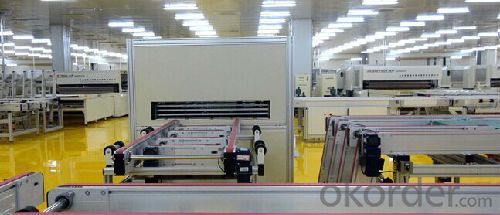
SOLAR SYSTEM INSTALLATION
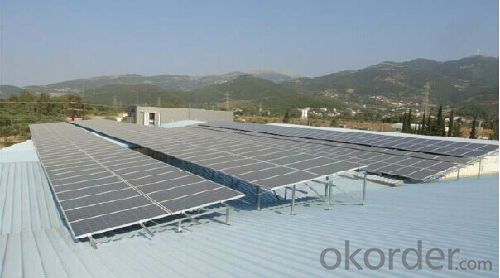
- Q: What is the role of a display or user interface in a solar inverter?
- The role of a display or user interface in a solar inverter is to provide users with real-time information about the performance, status, and operational parameters of the inverter system. It allows users to monitor the energy production, voltage levels, current flow, and any potential faults or errors. Additionally, the user interface enables users to configure and control various settings of the solar inverter, such as output power limits, grid synchronization, and system diagnostics.
- Q: Why is a solar inverter necessary in a solar power system?
- A solar inverter is necessary in a solar power system because it converts the direct current (DC) produced by solar panels into alternating current (AC) that can be used to power household appliances and be fed back into the grid. Without a solar inverter, the DC power generated by solar panels would be incompatible with the electrical grid and unable to be utilized effectively.
- Q: What is the operating temperature range of a solar inverter?
- The operating temperature range of a solar inverter typically varies between -20°C to 60°C (-4°F to 140°F).
- Q: Can a solar inverter be connected to a smart home or monitoring system?
- Yes, a solar inverter can be connected to a smart home or monitoring system. This integration allows for real-time monitoring, remote control, and data analysis of the solar energy production and consumption within a smart home or monitoring system.
- Q: How does a solar inverter handle shading on the solar panels?
- A solar inverter handles shading on the solar panels by utilizing maximum power point tracking (MPPT) technology. This technology enables the inverter to constantly monitor the output of each individual solar panel and adjust the voltage and current to ensure maximum power generation. When shading occurs on a panel, the inverter adjusts the voltage and current to bypass the shaded area and optimize the output from the unshaded areas. This allows the system to still generate as much power as possible, despite the shading.
- Q: How does a solar inverter handle power quality issues in the grid?
- A solar inverter helps to handle power quality issues in the grid by continuously monitoring the voltage and frequency of the grid. If it detects any variations or deviations from the standard levels, it adjusts its own output accordingly to maintain a stable and reliable power supply. Additionally, some advanced solar inverters also incorporate features like power factor correction and voltage regulation to further enhance power quality and ensure efficient utilization of the solar energy generated.
- Q: How do you calculate the maximum power point tracking range for a solar inverter?
- To calculate the maximum power point tracking (MPPT) range for a solar inverter, you need to determine the voltage and current range within which the solar panels can produce the maximum power output. This involves analyzing the voltage-current (V-I) curve of the solar panels under different irradiance and temperature conditions. By continuously monitoring the output of the solar panels, the MPPT algorithm in the inverter adjusts the operating point to match the maximum power point, ensuring optimal energy conversion. Therefore, the MPPT range is determined by the variations in irradiance, temperature, and the characteristics of the solar panels, and it can be calculated through experimentation or by referring to the manufacturer's specifications.
- Q: Can a solar inverter be used in off-grid systems?
- Yes, a solar inverter can be used in off-grid systems. Off-grid systems rely on solar panels to generate electricity and store it in batteries for use when the sun is not shining. A solar inverter is necessary to convert the direct current (DC) produced by the solar panels into alternating current (AC) that is usable by common household appliances.
- Q: What is the role of a fault detection system in a solar inverter?
- The role of a fault detection system in a solar inverter is to monitor the performance and integrity of the inverter and solar panel system. It detects and identifies any abnormalities or malfunctions within the system, such as voltage fluctuations, short circuits, or overheating. By promptly identifying and reporting faults, the system helps ensure the safe and efficient operation of the solar inverter, preventing potential damage and maximizing the overall energy generation.
- Q: How does a solar inverter handle excess power production?
- A solar inverter handles excess power production by converting the surplus energy generated by the solar panels into usable AC power. This excess power is either fed back into the grid or stored in batteries for later use, depending on the type of solar system setup.
Send your message to us
Solar Inverter V Guard - PV Grid-Tied Inverter-Sunrous Dual MPPT US
- Loading Port:
- Shanghai
- Payment Terms:
- TT or LC
- Min Order Qty:
- 10 mm
- Supply Capability:
- 1000 mm/month
OKorder Service Pledge
OKorder Financial Service
Similar products
Hot products
Hot Searches
Related keywords
